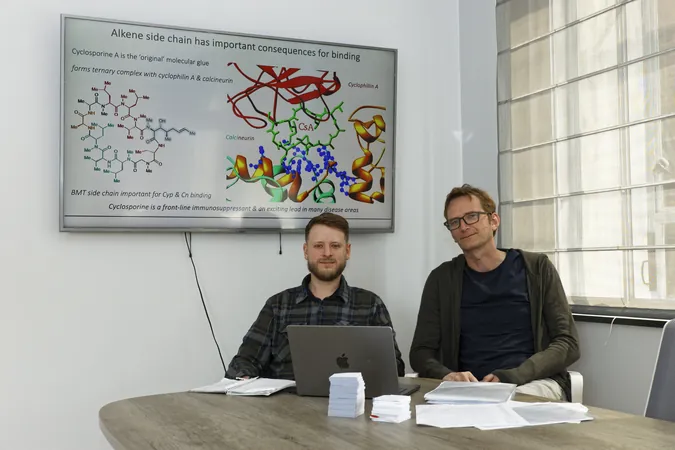
Game-Changer! Chemists Unveil Simple Method to Build Molecules, One Carbon at a Time
2025-06-04
Author: Siti
Revolutionizing Molecular Chemistry
A groundbreaking discovery at the University of Cambridge promises to transform the landscape of chemistry! A team of innovative chemists has introduced an astonishingly easy method to add carbon atoms to existing molecules, paving the way for accelerated drug discovery and the creation of complex chemical products.
The Breakthrough: One-Carbon Homologation
Published in the prestigious journal *Nature*, this game-changing research, titled "One-carbon homologation of alkenes," reveals a novel technique for extending molecular chains by seamlessly adding one carbon atom at a time. Focusing on alkenes—molecules crucial to various everyday products, from anti-malarial drugs such as quinine to agrochemicals and fragrances—this approach is set to streamline the way chemists work.
A Simplified Approach to Complex Chemistry
Under the leadership of Dr. Marcus Grocott and Professor Matthew Gaunt, the team has replaced tedious multi-step processes with an ingenious single-pot reaction that works with diverse molecules. "Alkenes are everywhere in chemistry, but until now, adding a single carbon atom was a complex task," explains Dr. Grocott.
How It Works – The Chemical Magic Revealed
The secret behind this innovative method lies in a cleverly designed "1-carbon transfer reagent"—a sophisticated chemical tool that effortlessly attaches to a target molecule, kickstarting a reaction that bonds them. Once attached, this efficiency-driven reagent reshapes itself, adding the extra carbon like snapping a new Lego piece onto an existing structure.
Testing the Waters with Cyclosporine A
To validate their findings, the team applied this novel approach to cyclosporine A, a vital medication that regulates the immune system. By deftly adding carbon atoms, they created new variants of this medicine that still interacted with the target protein, offering promise for fine-tuning its effects without completely disabling the immune response. This means chemists could significantly alter drug functionalities while maintaining essential therapeutic properties.
Unlocking New Possibilities in Drug Design
Professor Gaunt highlights the significance of this work: "This isn’t just about extending molecules; it’s a revolutionary tool for chemists to explore new chemical landscapes and access drug variants that were previously unattainable." The potential for precision molecular alterations could lead to groundbreaking advancements in medicinal chemistry, where minor structural changes can dramatically impact drug efficacy.
Beyond Pharmaceuticals: A Wide-Ranging Impact
The implications of this methodology extend beyond the pharmaceutical realm; it could revolutionize crop protection and advanced materials as well, wherever subtle modifications in carbon chains can influence performance. Dr. Grocott emphasizes, "This fresh approach grants us unprecedented control over molecular structure, making it both simple and extraordinarily versatile across myriad industries."
An Exciting Future Ahead!
With this new chemistry at their fingertips, scientists are set to unlock smarter, more targeted compounds that could change the world. The future of chemistry is brighter than ever, one carbon atom at a time!


 Brasil (PT)
Brasil (PT)
 Canada (EN)
Canada (EN)
 Chile (ES)
Chile (ES)
 Česko (CS)
Česko (CS)
 대한민국 (KO)
대한민국 (KO)
 España (ES)
España (ES)
 France (FR)
France (FR)
 Hong Kong (EN)
Hong Kong (EN)
 Italia (IT)
Italia (IT)
 日本 (JA)
日本 (JA)
 Magyarország (HU)
Magyarország (HU)
 Norge (NO)
Norge (NO)
 Polska (PL)
Polska (PL)
 Schweiz (DE)
Schweiz (DE)
 Singapore (EN)
Singapore (EN)
 Sverige (SV)
Sverige (SV)
 Suomi (FI)
Suomi (FI)
 Türkiye (TR)
Türkiye (TR)
 الإمارات العربية المتحدة (AR)
الإمارات العربية المتحدة (AR)